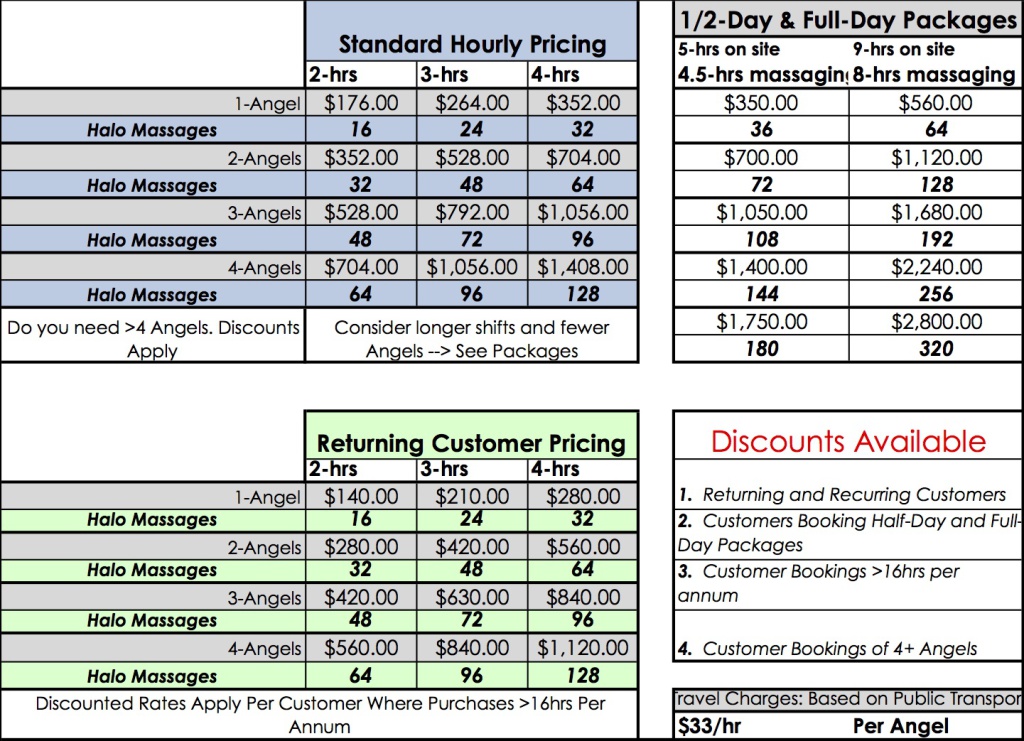“How should you price your product?”
It’s the question that keeps marketing departments, startup founders and product managers up at night (or it should).
Price matters to customers.
It’s important because you don’t buy stuff that’s not “fair value”, so why would your customers.
Putting our money where our mouth is…
When 3 Minute Angels first started, we operated in bars, airports and shopping centres and the customer paid what they thought it was worth after each 5-minute Halo Massage. This pricing policy really appealed to consumers and we enjoyed phenomenal growth, but that pricing policy didn’t transfer to the B2B market of today. Company departments as you would appreciate, use internal systems like purchase orders, invoices, and remittance advice. Paying based on satisfaction would be fair but ultimately would be a barrier in the B2B market.
Facing The Pricing Dilemma
A customer trying to do a price comparison wants to find pricing information quickly. But for various reasons sellers often don’t make this information easy to find.
Every business has variables that affect unit pricing – ours too.
Some businesses have VIP customer prices and they keep the VIP price for repeat customers. Some business models value new customers or referring ones and this type of customer can get the better deal.
And all of these incentives exist but rarely do you get to see these on a page when doing your price comparison.
It’s a dilemma. (And it annoys customers).
The customer wants to know your best price without you (the seller) having enough information on the specific customer to know what that best price is.
Distracting from the question is not the same as answering it.
In my earlier years of business I tried to resolve this dilemma by deflecting the question.
I thought I could avoid giving a straight answer to the question on price by advertising our price-match guarantee. In effect, I was saying “don’t worry about price, we’ll match whatever price you find”.
This deflection strategy might have resolved the question in my mind. But, it didn’t help the frustrated prospect trying to book for their office or event.
Our “price match guarantee” doesn’t help the price comparison shopper, who needs a single figure to compare apples and apples.
Transparent Pricing
These days my personal philosophy has moved to transparency. It’s not that we have abandoned the price match guarantee. It’s more we’ve decided to stop annoying our customers and answer the question that was asked.
We now publish our rates and show the thresholds where discounts apply.
Sure this exposes our business to competitors.
It’s less subtle than a conversation with a customer over the phone where you can “big up” the value, guarantees and discount your giving them as the seller.
But on the whole, I’ve found, what you remove as a frustration for customers generally leads to better sales.
I’m also well and truly aware that you wont get a customer “wow” moment if you can’t even remove the customer “argh” moments.
So, if you’re keen to see how a small business that sells semi-skilled labour to larger organisations makes our pricing decisions, check out our pricing for Angels here.
*** Thank you for taking the time to read this. A version of this blog will also appear in Startup88 and online magazine for startups where I (Wardy) write a column every now and again. ***

